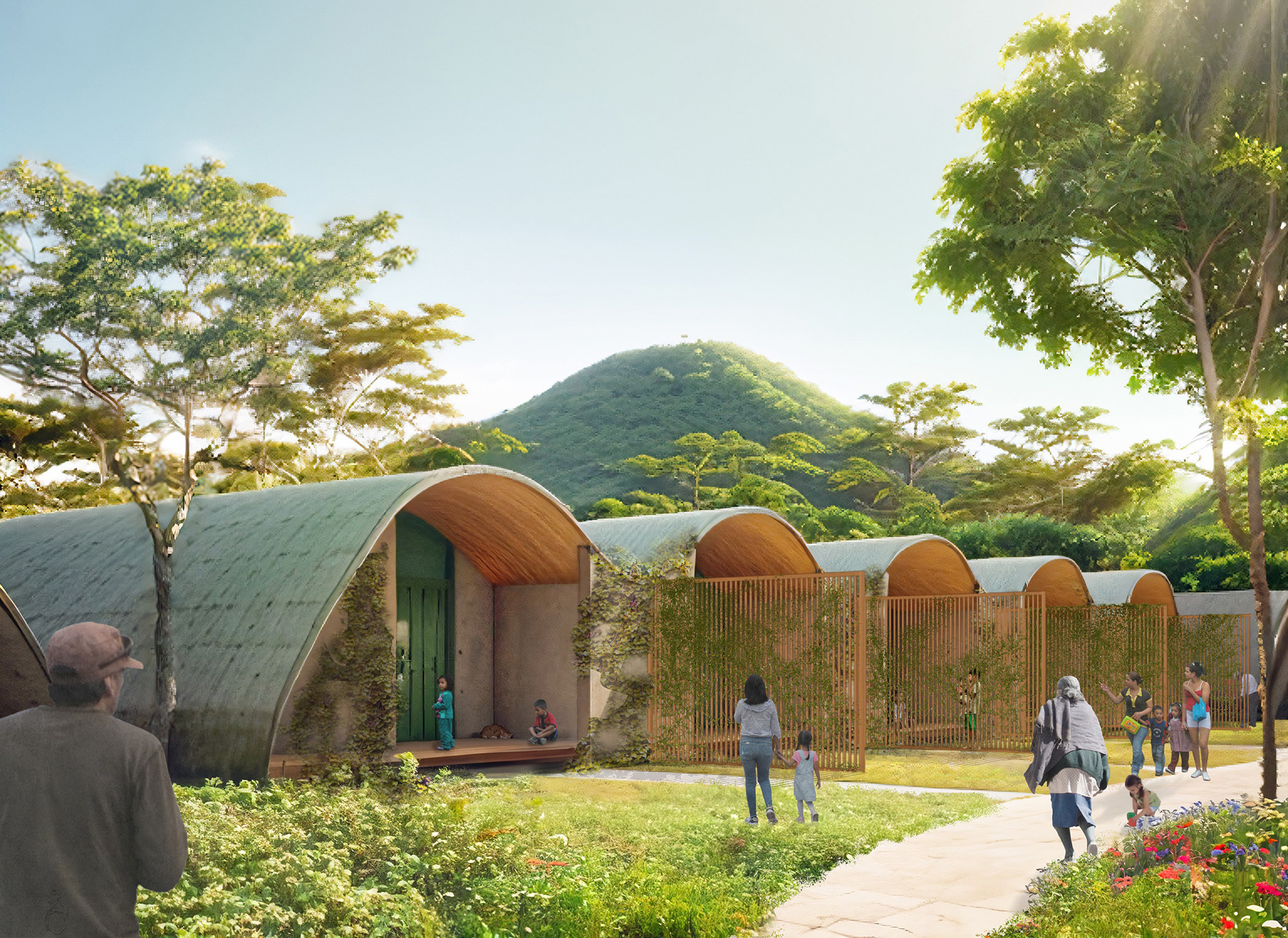Today, about 120 million people have been forcibly displaced from their homes. About three-quarters of these individuals live in low- and middle-income countries, straining host communities and their resources—including housing.
A research project called Essential Homes has devised a housing prototype to help address the need for affordable and sustainable housing. The design could serve not only displaced people but also the estimated 1.6 billion people living in inadequate, crowded, and unsafe housing.
Holcim, a Switzerland-based manufacturer of building materials, and the Norman Foster Foundation, a nonprofit based in Spain that promotes future-oriented thought and research, launched the Essential Homes research project to demonstrate how sustainable building can be possible for everyone.
Sustainable Affordable Housing Prototype
At this year’s Royal Academy Summer Exhibition, Holcim and the Norman Foster Foundation unveiled a scalable prototype of a sustainable residential structure intended for real-world use. The prototype has been developed for rollout in Latin America in 2025, following a study of local housing conditions and the environment.

The Essential Homes units in Latin America will be built with low-carbon, local materials, including Holcim’s ECOPact low-carbon concrete for the foundation slabs and ECOPlanet low-carbon cement for the homes’ external panels and internal partitions. A custom high-performance concrete will be used in the prefabricated roof panels. The units will be fully recyclable.
The home’s curved design features a rollable concrete canvas containing low-carbon cement that can be unrolled to form the home’s shell. According to the Foundation’s drawings, it will take just two people to pull the canvas over the formwork. When sprayed with water, the canvas becomes rigid within hours and structurally sound within 24 hours. The design provides waterproofing, seismic resistance, and humidity prevention.
The unit has an interior of at least 42 square meters (452 square feet), including two bedrooms, one bathroom, and one shared space with living room and kitchen. Each home can be built for $16,000.

The Essential Homes project got its start with a workshop that the Norman Foster Foundation held for young graduates interested in refugee housing.
“Realizing that a family can spend up to nearly two decades living in a tent, the scholars posed a challenge: Could a more durable, permanent, and dignified home be built in a few days [and] be economically viable and sustainable?” Norman Foster, architect and president of the Normal Foster Foundation, said in a statement.
The Norman Foster Foundation and Holcim answered that question with a prototype home first shown at the 2023 Architecture Biennale in Venice, Italy. With a 70% lower CO2 footprint than a traditional structure, the prototype aimed to enhance the livelihoods of some of the world’s most vulnerable populations, including displaced people who potentially can live in temporary settlements for 20 years.

That initial design evolved into the rowhouse version shown at the Royal Academy’s 2024 summer show. At the London exhibition, Holcim and the Norman Foster Foundation showcased sketches of Norman Foster’s Essential Homes concept, as well as physical models of the 2023 model and the updated prototype.
The Norman Foster Foundation says it designed the updated prototype to provide safety, comfort, and wellbeing for low-income or displaced communities, enabling them to live affordably and sustainably. The team aims to build the first five units by the end of this year, followed by the rollout in Latin America next year.









